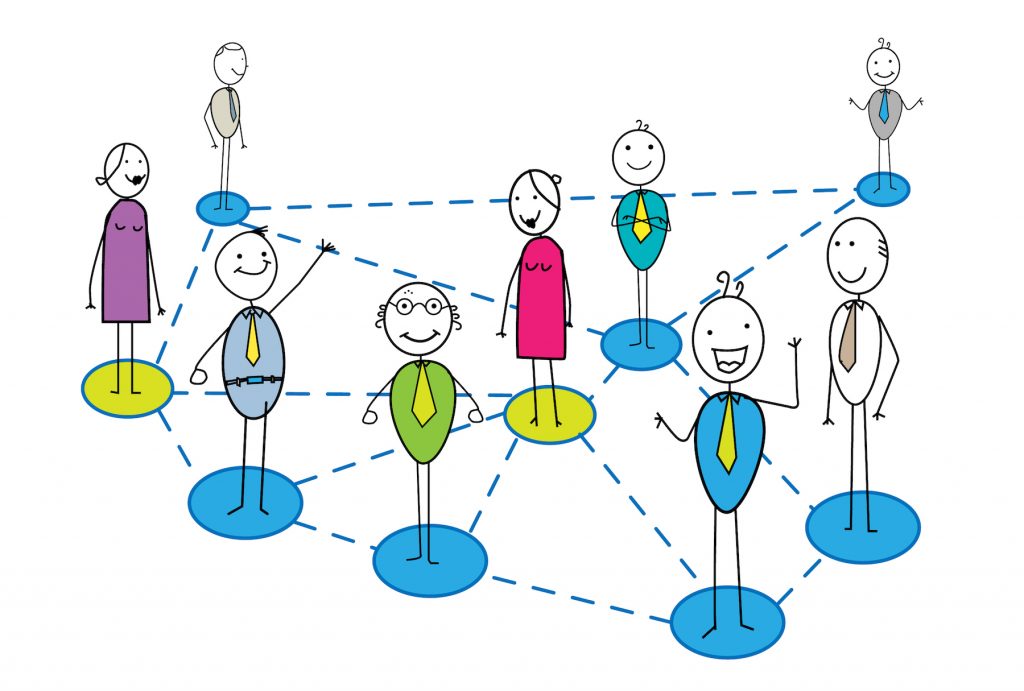|
Resistance To ChangeDealing With The Disconnects
Dealing with resistance to change is a subject about which much has been written and it remains a recurring subject in comments and questions posted on this site and about which people email me. Resistance to change is an entirely natural reaction. It is a reaction to what is perceived as a threat to the comfortable and familiar status quo. As discussed extensively on this site, the emotional dimension of leadership in change situations is important. All too often this is ignored and this is reflected in in the failure figures. The odds are not in your favour, and the unpalatable reality is that, statistically you only have a 1 in 3 chance of succeeding and realising the benefits of your change initiative.
Resistance to change is a direct consequence of leadership failure and management failureFailure reasons in change management are many and varied, but in the literature of change management there are recurring themes for change failure. In my experience these themes can be distilled into 3 big reasons for the failure rate: (1) Gap - The failure to fill in the gap between the “big-picture” vision and what is required to achieve the intended organisational benefits. (2) Resistance - The lack of understanding of the impact of organisational culture and the failure to realise how it is hard-wired into the organisation and as such will be a significant source of resistance. (3) Impact - The failure to recognise and address the impacts of the change and especially with those people in the frontline. Underlying these reasons, are a number of related factors:
In my experience, change management is about process and people. But given that process is just about people doing stuff... ultimately it's all about people - and processes that work for people. Resistance to change is the inevitable consequence when management do not recognise and apply this. What is needed is facilitative-leadership.
A good understanding of the multiple factors that lead to resistance to change"The implementation of (change) strategy, directly or indirectly, relates to all facets of management. Therefore, it is essential to follow a holistic approach when analysing and evaluating complex issues of implementation, and... a good understanding of the multiple factors that must be addressed, often simultaneously, to make implementation work." (Fevzi Okumus, 2003 "A framework to implement strategies in organizations" in “Management Decision” Vol.41 No 9) This whole site is dedicated to identifying and explaining the key areas that need to be addressed for a successful change initiative – and showing you how to put all this into practise and the key steps in anticipating and, when necessary, dealing with resistance to change. There is no single "golden bullet" that guarantees a successful change initiative, and that overcomes all resistance to change. Dealing with resistance to change requires an understanding of a number of inter-related factors:
Resistance to change is the inevitable consequence when senior management overlook the people related issues that are crucial to success, but there is a further, closely related, reason and that is to do with organisational culture.
The significance of organisational cultures and especially sub-culturesIn my experience, organisational culture (or more accurately cultures) is the single biggest determinant of how an individual will behave within a business or organisational environment. It will over-ride education, intelligence and common sense. I have seen many senior people in large organisations behave in ways that on occasions defied common sense and the "blindingly obvious" - and they weren't aware of it (or if they were, they certainly weren't letting on!) Cultures are the major determinant in how people will react to change and your attempts to apply "change management" to them, and they are a major source of resistance to change. This is a subject that I find tends to get a somewhat polarised reaction whenever I discuss it with directors. There is either a polite indifference and "...well let's get on with discussing the practical aspects of how we're going to do this?" type of response; or considerable interest then the question: "How can we actually deal with it and change it?" In both cases there is the feeling that culture is a "soft" intangible subject that is difficult to discuss in specific terms, and in the first response the belief that because we can't see it or really get a handle on it then it's irrelevant. Can I challenge you now... as you are reading this... how do you feel about the culture(s) of your organisation? Understanding how the widely differing groups and networks of people within your organisation behave and function is both essential and it is quantifiable.
Main characteristics of organisational culture
Addressing organisational culture involves these 3 processes
The process of cognition involves a thorough cultural mapping and analysis of "How we look now" and "How we want to look in future" to define a cultural framework for the organisation that identifies:
It also identifies all of the significant subcultures within the company that will assist the change initiative or be a source of resistance to change:
Specifically, knowing how to identify and connect with all of the "sub-groups" or sub-cultures is critical. There are sub-cultures that are "regressive" and who show resistance to change, and there are sub-cultures that are "subversive" and who will go beyond mere resistance to change and seek to undermine it. One of the first steps to dealing with resistance to change is to identify and map these individuals and groups and their networks and relationships. Fortunately, there are other sub-cultures that are "emergent", moving forward and receptive to change but doing so "unknowingly" (that is without full conscious awareness of the significance of their attitudes and behaviour), and better still there are sub-cultures that are "aspirational" and who embrace change and seek it positively. These sub-cultures behave knowingly (that is with full conscious awareness of what they are doing). For more information on this please see: The case for using a culture maturity model To learn about out the specifics of the tool and process to enable you to undertake this detailed cultural and sub-cultural analysis please refer to: The Practitioners' Masterclass which includes a whole module specifically on cultural mapping and analysis. 8 FREE Introductory Lessons from Practitioners Masterclass - HERE
Understanding the critical disconnects - where they are and how they ariseBefore we look at the related area of informal networks, in the context of dealing with resistance to change, it is important to understand the critical disconnects - where they are and how they arise and how they impact employee responses to change. In most large organisations (at least here in the UK) the predominant leadership style is transactional - that is it employs conventional reward and punishment to gain compliance. The management context in which this is ecercised is most typically centralised command and control where change [along with everything else] is imposed from the top-down.
These transactional leaders accept the goals, structure and culture of their existing organisations. They have to, because their type of leadership is ineffective at bringing significant change.
8 FREE Introductory Lessons from Practitioners Masterclass - HERE
(1) Management are detached from direct feedback from the frontline and the human consequences of their decisions
The further up the "greasy pole" we look, the greater the disconnect. Neil Farmer of Informal Networks Ltd describes this as: "... a deadly case of an inverse correlation – on the one hand growing ego and confidence, and on the other diminishing feedback, from source." Neil explains how this happens: "Consider the case of a bright young individual joining a company, probably with a decent degree in something useful... after a while, having been predictably successful, the individual is promoted to a junior management role. As a generality, employees are neither trained in the need for and skill of acquiring feedback; nor are they trained in the essential interactive skills that underpin all success in management, if it is the long-lasting variety, that is. As these include all those good questioning techniques noted above, it is safe to assume that the (successful?) individual is blissfully unaware of the impact of their interactive behaviour on other people. As with most new junior managers, the lack of training continues into the first management job. At which point, the new manager is now one step removed from the source of critical feedback, now about managing behaviour and the decisions that are made, to be implemented by some other benighted soul – who does not have the chance to explain why the consequences stem more from the original decision than its implementation. The probability of valid reverse feedback from source is now much reduced. As there is no critical feedback, blocked by the lack of skills of the newly promoted manager, the confidence that the new manager felt at the point of promotion is now increased, by the lack of reverse feedback.
As the new manager does actually have a degree of competence, results are mixed, with at least some good news, and, after a while, another promotion occurs. The manager is now even farther removed from the source of feedback about the actual consequences of management decisions made, and the managing style applied – and the probability of getting it reduces even more..."
(2) Up to 75% of an organisation's natural leaders and informal networks sit outside of the formal management structure
"In an informal network, people start working together because they have self interests in common, not because they are being forced to work together. In other words, they work with each other because they find it beneficial to do so. People join an informal network because of the value of the knowledge they receive and the personal relationships they build." (Lowell Bryan and Claudia Joyce, authors of “Mobilizing Minds”) In start ups, and very small businesses, staff have a direct and in-depth connection with what they do and the results that are generated. There is usually a strong sense of ownership of tasks. Lines of communication between staff and the business owner will usually be informal and direct, and a strong sense of community develops. Roll the clock forward a few years and, if the business is fortunate enough to still be in existence and succeeding, the owners may decide to expand. At this point, processes become more formalised and structured, and layers of management are introduced. As the business continues to expand the owners/investors seek to expand further and having developed a successful business model look to develop their initial success through replication. Whilst replication is essential to business expansion it inevitably introduces a level of "de-skilling" as business processes are defined and documented, and increasing levels of IT and automation are introduced. It is around this point that employees experience increasing levels of disconnection from the informality and easy communication of the original (and smaller) business as the formality of the "newish" management structures and business processes are introduced and increasing numbers of new employees are recruited. Roll the clock forward a few more years and management are looking to maintain or increase productivity and profitablity by introducing process improvements. The disconnect increases... Roll the clock on a bit further and the first disconnect we discussed above - "Management detachment from direct feedback"- really starts to kick in and so the disconnect increases... and all of this leading to eventual increased resistance to change. To compensate for this loss of immediacy, intimacy, camaraderie and the ability to resolve stuff quickly without recourse to formal processes and structures, staff develop their own informal "work arounds" to problems and informal networks occur naturally and "natural leaders" emerge. This then is the genesis of the "shadow organisation" and what leads to the proliferation of an organisation's informal networks. This is also the fertile soil in which much resistance to change grows. Neil Farmer estimates that up to 75% of an organisation's informal networks sit outside of the formal structure.
Working with informal networks"...leaders at all levels have a difficult time with, or don’t realize they need to address, a key avenue to success: balancing two distinct dimensions of human behavior and organizational performance—the formal and the informal elements. Learning how to mobilize the informal elements of an organization to accelerate the formal elements goes a long way in helping leaders fill the gap between intention and results."
(Jon Katzenbach and Zia Khan, Authors of "Leading outside the Lines")
In his famous 8 Step Change Model, John Kotter emphasises the importance of creating and sustaining an energy for change starting with a sense of urgency and then building on that to build a coalition for change. Kotter advises that for a significant change initiative to have any chance of overcoming resistance to change and succeeding, it requires the support of at least 75% of the management. The recognition, identification and utilisation of informal networks takes these insights a quantum step forward. Neil Farmer points out that whilst the formal organisation determines all routine aspects of what takes place, and in so doing provides the necessary "glue" of stability and repeatability, the shadow or informal organisation largely determines the scope and pace of change. Clearly, the informal networks are key to dealing with resistance to change. As Neil Farmer observes: "Where the shadow and formal organisations come into conflict in a change situation, the balance of influence in the shadow organisation will almost always win the day."
Key steps to dealing with resistance to change via informal networksRelaxing "command and control" The first step to dealing with resistance to change is for the CEO and senior management to relax "command and control". In reality, his seldom happens. The leaders and senior management of most large organisations are "hard-coded to resist" this. Thus resistance to change often starts at the top.
Organisation Network Analysis The cultural analysis that I have developed and outlined above was created to identify, map and articulate the various cultural and sub-cultural entities that exist with an organisation and to examine how this will be different in the changed organisation. Organisation Network Analysis (ONA) is an extension of the thinking behind my own cultural and sub-cultural analysis - moving beyond the identification of entities and individuals who inhabit a range of sub-cultural attitudes and behaviours (which may or may not be receptive and open to change) and into the identification and mapping of the networks of these individuals. The applied methodology for conducting an Organisation Network Analysis (ONA) is similar to that employed to conduct a cultural analysis, namely an iterative process of informal interviews commencing with a known change positive influencer and preceeding on a referral basis until all referrals in the network have been interviewed. ONA scans are guided and enabled by known change positive influencers and can move from "shallow" scans to increasingly "deeper" scans. Here is the typical pattern of this progression:
(I am indebted to Neil Farmer of Informal Networks for the specific details re ONA) Identifying the "change positive" key influencers in the informal networks Jon Katzenbach call these "change positive" key influencers "master motivators" - these are people right down at the front line who are naturally and intuitively collaborative, who are already recognized amongst their colleagues for their unique ability to gain the emotional commitment of their people - those who intuitively make better use of informal networks and communities of common interest than most good managers do. There are 2 types of key influencers/master motivators: those who are open-minded to change (these people will inhabit what I identify as "emergent" sub-cultures), and those who are by nature positive to change (these people will inhabit what I identify as "aspirational" sub-cultures). Introducing key influencers/master motivators into first line management roles This first level of management has the most contact and thus most direct influence on people and is thus critical in dealing with resistance to change. Neil Farmer suggests that typically there may be only as few or 30 or 40% of key influencers/master motivators in these positions, and is highly desirable to increase this to 80% as soon as possible. Don't try to manage the informal networks like the formal networks Jon Katzenbach says that the biggest mistakes leaders make when trying to manage and maximize the informal organization is to try to manage the informal like the formal: "It can’t be told what to do; it must be convinced, influenced, and energized. We tell clients that they must mobilize the informal and manage the formal. Therefore, it’s a big mistake to think that top-down communication will keep the informal interactions positive. "
Recommended Resources
Key factors to address BEFORE embarking on a change intiative
|









 Each of the links below will take you to a fully downloadable and free key document:
Each of the links below will take you to a fully downloadable and free key document:

